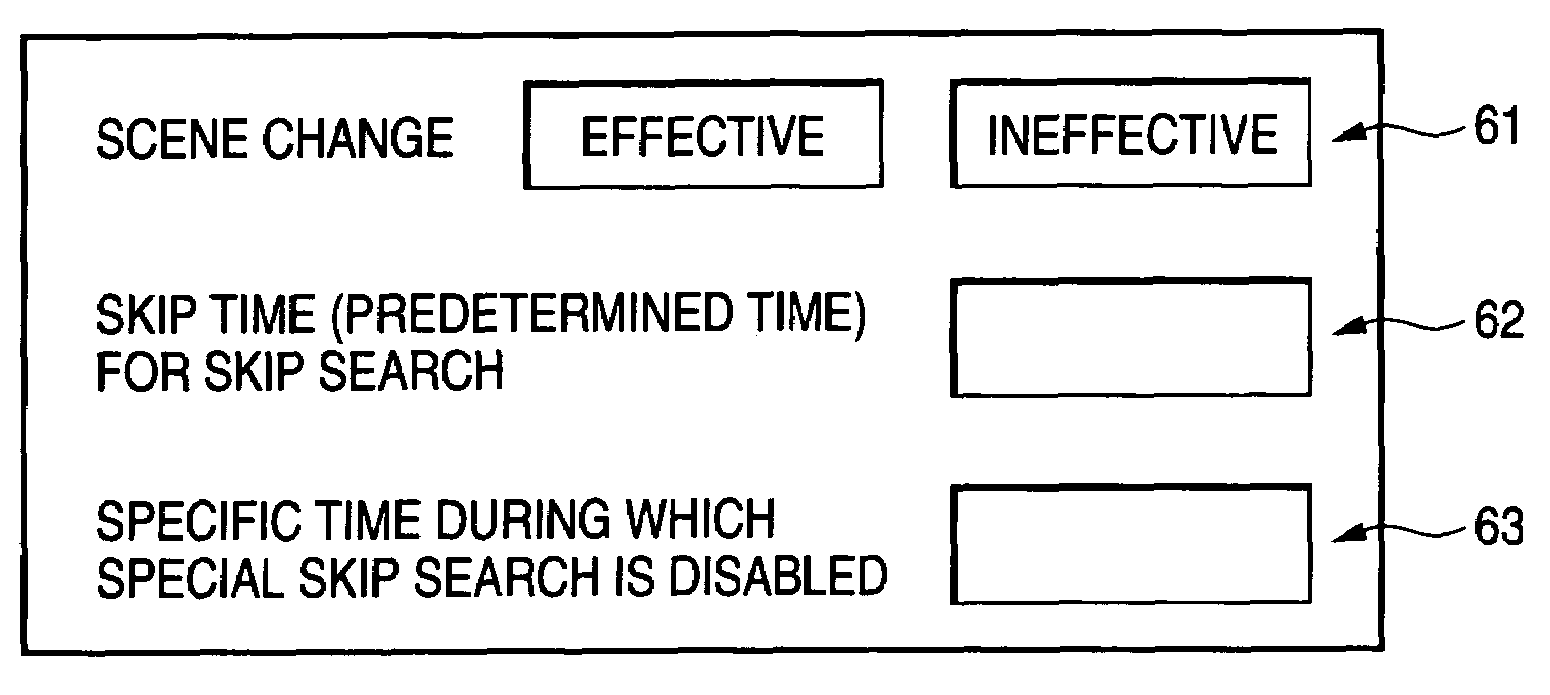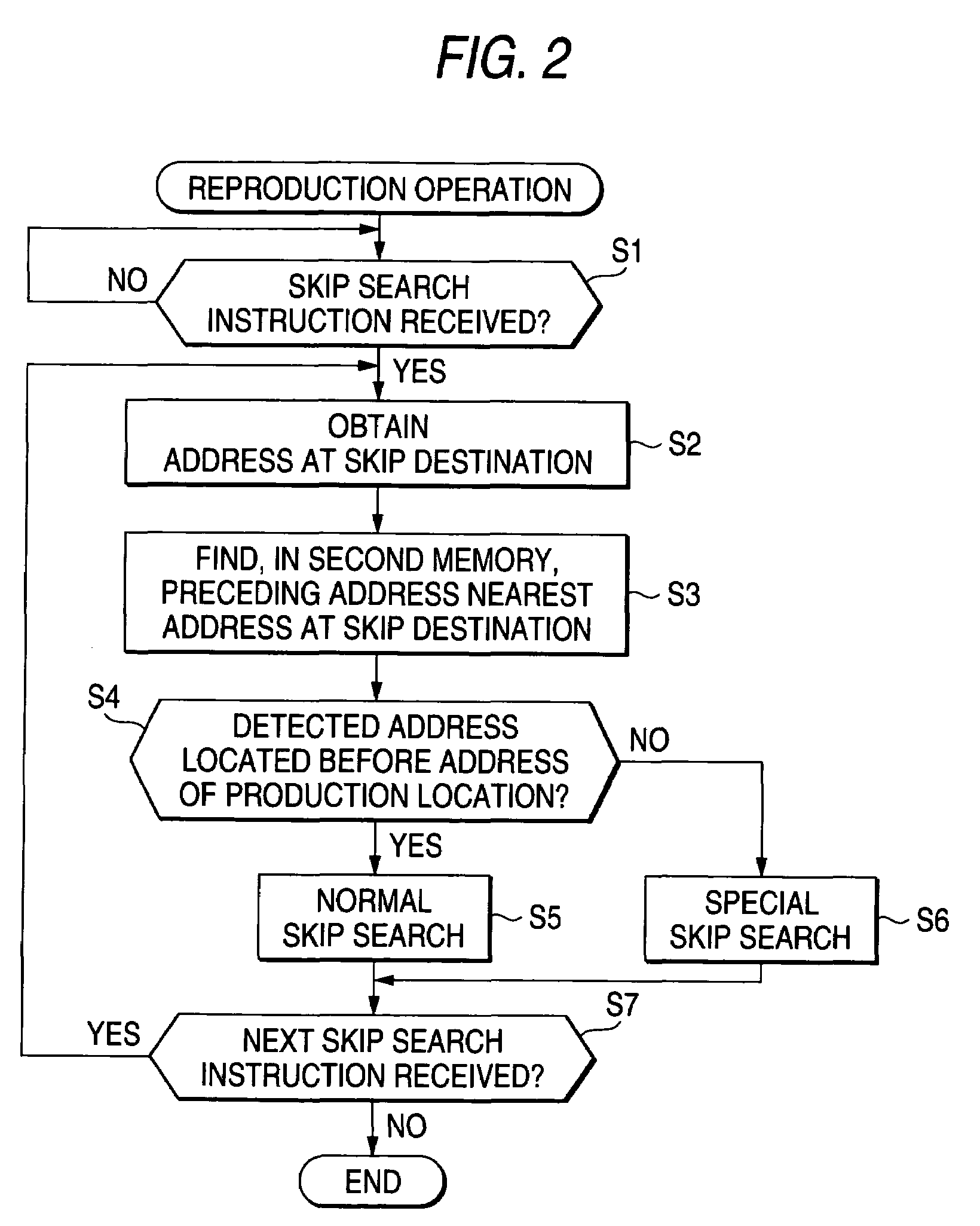Recording and reproduction apparatus
a technology applied in the field of recording and reproduction apparatus, can solve the problems of not being able to achieve the effect of quick detection
- Summary
- Abstract
- Description
- Claims
- Application Information
AI Technical Summary
Benefits of technology
Problems solved by technology
Method used
Image
Examples
first embodiment
[0042]In a first embodiment, the addresses of moving picture data at the scene change locations, which are detected by the scene change detection means 10, are sequentially stored in the second memory 13, and the skip search is performed using these addresses.
[0043]The skip search mode performed during reproduction will now be described while referring to the flowchart in FIG. 2.
[0044]When a skip search instruction is received from the remote controller 18 during the reproduction of moving picture data (when the decision at step S1 is YES), the microcomputer 11 initiates the skip search beginning at the current reproduction location. That is, a calculation is performed in advance to obtain the address of a destination determined by skipping from the current reproduction location for a predetermined time, such as thirty seconds (step S2). The addresses stored in the second memory 13 are examined based on the obtained address at the skip destination, and a preceding address nearest th...
second embodiment
[0048]In a second embodiment; the position information for scene changes is included in moving picture data, not written in the second memory 13, and all the data are stored on the hard disk 6. During reproduction, a skip and search is performed by reading the scene change location information from the moving picture data. Therefore, the second memory 13 is not required for the second embodiment.
[0049]The recording operation will now be described while referring to the flow chart in FIG. 3, and the skip search operation performed during reproduction will be described while referring to the flowchart in FIG. 4.
Recording Operation
[0050]In parallel with the recording of moving picture data, the microcomputer 11 constantly monitors the scene change positioning information transmitted by the scene change detection means 10 (step S11). Then, the microcomputer 11 stores on the hard disk 6 the positioning information for scene changes detected by the scene change detection means 10, in corr...
third embodiment
[0059]According to the third embodiment, the problem described above can be resolved by writing the differential information for scene change in the I picture, instead of making the decision at the time of the skip search.
[0060]The recording operation will now be described while referring to the flowchart in FIG. 5.
Recording Operation
[0061]In the flowchart in FIG. 3, the processes at steps S13 and S14 are performed until the next scene change appears; however, in the third embodiment, these processes are modified as is shown in FIG. 5.
[0062]Specifically, a check is performed to determine whether a specific time, such as fifteen seconds, that is shorter than a predetermined skip search time, such as thirty seconds, has elapsed before the detection of the next scene change (step S41). When the specific time has not yet elapsed (when the decision at step S41 is NO), the microcomputer 11 advances to step S14, as in the first embodiment, and sequentially writes in the headers of I pictur...
PUM
| Property | Measurement | Unit |
|---|---|---|
| time | aaaaa | aaaaa |
| time | aaaaa | aaaaa |
| time | aaaaa | aaaaa |
Abstract
Description
Claims
Application Information
 Login to View More
Login to View More - R&D
- Intellectual Property
- Life Sciences
- Materials
- Tech Scout
- Unparalleled Data Quality
- Higher Quality Content
- 60% Fewer Hallucinations
Browse by: Latest US Patents, China's latest patents, Technical Efficacy Thesaurus, Application Domain, Technology Topic, Popular Technical Reports.
© 2025 PatSnap. All rights reserved.Legal|Privacy policy|Modern Slavery Act Transparency Statement|Sitemap|About US| Contact US: help@patsnap.com



